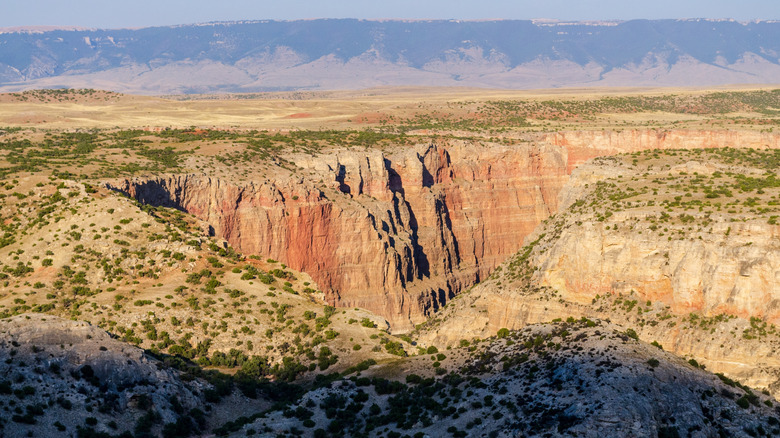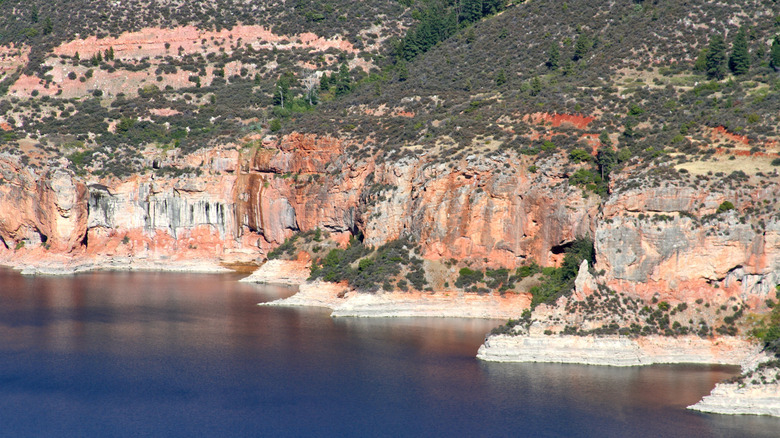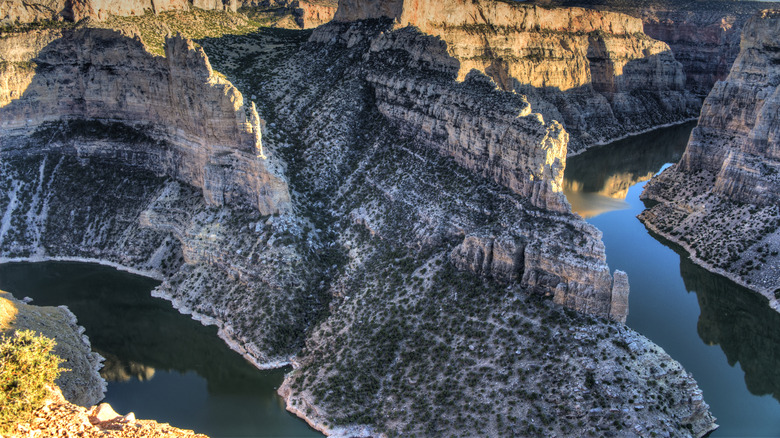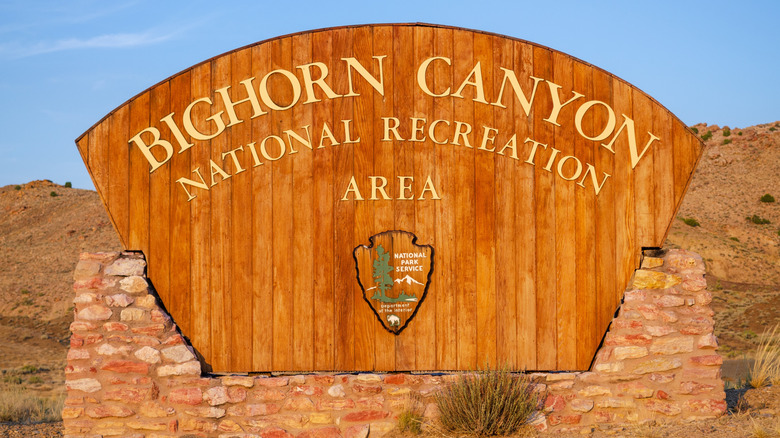A Lesser-Known National Recreation Area Out West Is A Massive Canyon Offering Water Recreation
Many parks and forests protected by the government are regularly overcrowded. These include Yosemite National Park, especially during its fleeting February "Firefall." While it's great that people want to go out and explore these locations, it makes it difficult to connect with nature when there are thousands of other people surrounding you. In these cases, it might be time to find a new place to explore.
Bighorn Canyon, in Montana and Wyoming, is the perfect choice if you're looking for an undiscovered gem. It has been a national recreation area since 1966, and boasts over 120,000 acres split up into two regions. This destination does get a fair amount of visitors, roughly 200,000 a year. However, compared to some of the most popular national recreation areas in the United States, the numbers are quite small. Blue Ridge Parkway, the most visited National Park Service site, gets nearly 17 million visitors annually.
Recreation areas nationwide, such as that of Colorado's Brainard Lake, which is hidden by a glacier-carved valley, allow people to feel connected to nature while enjoying and utilizing the wilderness. Many outdoor activities are made available to visitors, including boating, fishing, camping, hiking, horseback riding, and bicycling. Bighorn Canyon has all of this to offer and more. Its main focus, however, is water activities. Bighorn Lake is 5,574 acres and offers places to boat while surrounded by cliffs. Meanwhile, Bighorn River is the perfect place to fish, especially for trout.
Picking a side at Bighorn Canyon
The main thing you need to know before visiting Bighorn Canyon is the layout, which is divided into two areas. These two districts, the north and south, are inaccessible to one another inside of the recreation area. Their respective entrances are far apart, roughly a three-hour drive. So when you're planning out your trip, you may want to focus on visiting one side at a time. It's advised to avoid making plans to see things that are on different sides of the park on the same day, which would waste a lot of time behind the wheel.
The northern area, with its entrance in Montana, highlights aquatic recreation and is home to the Yellowtail Dam. Not only did the building of this structure help to mitigate floods, it also provided additional recreational activities to draw in tourists and increase jobs. Because of the dam, the Bighorn River is the most fished stream in all of Montana, and the area is known as a world class trout fishery. Additionally, in the north district, there are opportunities to swim and boat at the Ok-A-Beh Marina and hike along three trails.
Over on the south side, visitors can experience the best of both worlds. There are a number of land-based activities, including 12 hiking trails, a few overlooks, and some historic ranches that can be explored. Like the north area, there is also the Horseshoe Bend Marina, where you can swim, boat, and fish.
The best time of year to visit Bighorn Canyon
The recreation area is open every day of the year, 24 hours daily, with no gates or locks. The only exception comes during hazardous winter weather conditions, when Bighorn Canyon is closed to visitors. Montana and Wyoming have some pretty extreme winters, making them the ideal states to enjoy snow-capped beauty in cities like Missoula. Still, it may not be the best time of year to go on the water or a hike.
The only closures are to the visitor centers. The one near the Yellowtail Dam, in Fort Smith, Montana, is only open regularly from Memorial Day to Labor Day. The other, known as the Cal S. Taggart Bighorn Canyon Visitor Center, is in Lovell, Wyoming. This center is open throughout the year, with occasional closings due to weather and holidays.
While you can go to Bighorn Canyon at any time, the summer is the most ideal. This is when the weather is pleasant and there is no snow on the ground. Generally, anytime between May and September is considered the best time to visit. Even in the busiest months, the crowds still don't compare to those you would experience at other parks and recreation areas.
Staying at Bighorn Canyon
While you could find a hotel in Lovell, Wyoming or Fort Smith, Montana, you have to stay at one of Bighorn Canyon's campgrounds if you want to truly enjoy the recreation area. There are places to camp in both the north and the south districts, and are great options to reduce your driving time back and forth between a hotel and the canyon. However, most are first-come, first-served, so it's a good idea to have a backup or two.
If you don't want to risk not having a spot, Airbnb or Vrbo are great options. It lets you get close to Bighorn Canyon with some added comforts. Though these options can be a bit costly at times, they're often worth the price if you're traveling with a group.
Additionally, the park only offers a couple of snacks at the visitor centers, so you want to be prepared. Lovell and Fort Smith are the best places to stock up. Fill a cooler with your favorite drinks and some food so you can stay in the park as long as possible. Both towns also offer a wide range of places to eat, from fine dining to simple sandwiches. However, stores, especially outdoor centers, are fairly limited unless you drive a little farther out. Check your gear carefully to make sure you don't have to go on a different kind of adventure to find a shopping center.



